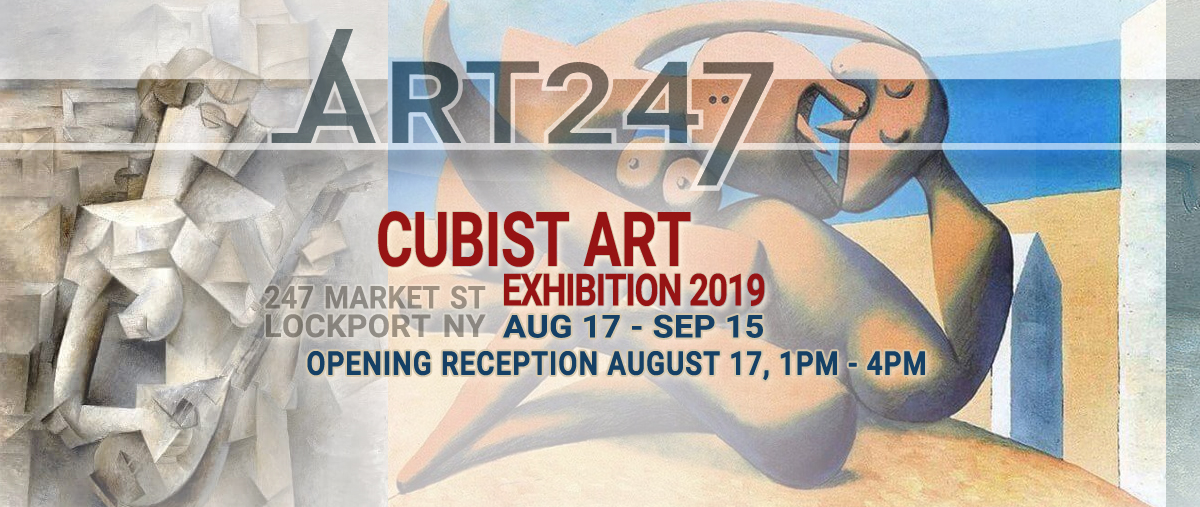
CUBISM | EXHIBITION 2019
Gallery Exhibition
AUGUST 17 - September 15
"Cubism is not a reality you can take in your hand. It's more like a perfume, in front of you, behind you, to the sides, the scent is everywhere but you don't quite know where it comes from." -Pablo Picasso
"Cubism" was a highly influential visual arts style of the 20th century that was created principally by the painters Pablo Picasso and Georges Braque in Paris between 1907 and 1914. The Cubist style emphasized the flat, two-dimensional surface of the picture plane, rejecting the traditional techniques of perspective, foreshortening, modeling, and chiaroscuro and refuting time-honoured theories of art as the imitation of nature. Cubist painters were not bound to copying form, texture, colour, and space; instead, they presented a new reality in paintings that depicted radically fragmented objects, whose several sides were seen simultaneously.
CUBISM KEY IDEAS
ABANDON PERSPECTIVE & REALISTIC MODELING OF FIGURES
Cubist artists abandoned perspective, which had been used to depict space since the Renaissance, and they also turned away from the realistic modeling of figures.
CHANGING EXPERIENCE OF SPACE, MOVEMENT, AND TIME IN THE MODERN WORLD
Cubists explored open form, piercing figures and objects by letting the space flow through them, blending background into foreground, and showing objects from various angles. Some historians have argued that these innovations represent a response to the changing experience of space, movement, and time in the modern world. This first phase of the movement was called Analytic Cubism.
ACUTELY AWARE OF CURRENT EVENTS
In the second phase of Cubism, Synthetic Cubists explored the use of non-art materials as abstract signs. Their use of newspaper would lead later historians to argue that, instead of being concerned above all with form, the artists were also acutely aware of current events, particularly WWI.
UNITY BETWEEN A DEPICTED SCENE AND THE SURFACE OF THE CANVAS
Cubism paved the way for non-representational art by putting new emphasis on the unity between a depicted scene and the surface of the canvas. These experiments would be taken up by the likes of Piet Mondrian, who continued to explore their use of the grid, abstract system of signs, and shallow space.
Artists are asked to explore the Cubist Art Style and create an original work/s of their own incorporating as many key ideas of the movement as possible.
Join us August 17, 2019 1pm - 4pm at our Cubist Art Exhibition, Opening Reception.
Artists interested in submitting work into exhibitions may find the
Call For Artist - Submission Details: HERE